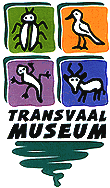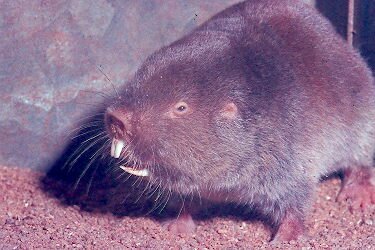
E - MAIL
Collection Manager (Vertebrates)
Captain Ndhlovu
Preperator
Annah Mavalela
Preperator
Sam Rantlhakgwa
Preperator
Department of Vertebrates
Mammal Collection
The Mammal Department houses various collections comprising the entire spectrum of southern Africa's mammal population for reference and research purposes. The collections include small mammal collection which incorporates the entire rodent population at species and subspecies level; bat, primate, small carnivores, Mustelidae, and small insectivores. These are stored as skulls and skeletons - both with a TM number which marks their identification for reference and collections management purposes.
South Africa Mammal Species List click
African Bat Conservation News click
AFRICA - Big 5 & Little 5 click
A BABY hippopotamus, swept into the Indian Ocean by the Tsunami, is finally coming out of his shell thanks
to the love of a 120-year-old to Tortoise click
| Collection A large mammal collection is stored in the Museum's basement which includes all larger mammals found within the sub-region. These comprise large carnivores, all antelope species as well as the larger mammals found in this area. For practical purposes, a wet collection is also housed , but only certain small mammals are kept in the wet collection. They are preserved in labeled bottles in a mixture of alcohol and distilled water. All dated specimens have an allocated TM number linked to the database. |
|
Finally, there are the type specimens which are kept in the strongroom. These specimens are of vital importance in understanding the history of the species represented, and are invaluable from a research point of view.
 Mole Mat |
 Ground squirrel |
Research must be conducted on the collections to determine trends, distributions and population dynamics. The staff are also responsible for the identification and collection of specimens which could enhance present distribution ranges of some species. Through surveys on various nature reserves, possible future management problems may be identified due to the fact that small mammals are incredibly sensitive to environmental changes and are therefore key species in such operations.
Collection management is important as we try to expand our traditional collection but also preserve our present specimens. Computerized enhancement of collection data and augmentation of traditional collections with tissue and bacula are also considered important. Through keeping representatives of the biodiversity of southern African mammals, a clear understanding of the distribution, status and abundance of species can be monitored more closely.
 Bat collecting |
|
|
Education is also a priority of the Museum. This is achieved through scientific publications, lecturing, studentship and public education through television, radio and journals.


